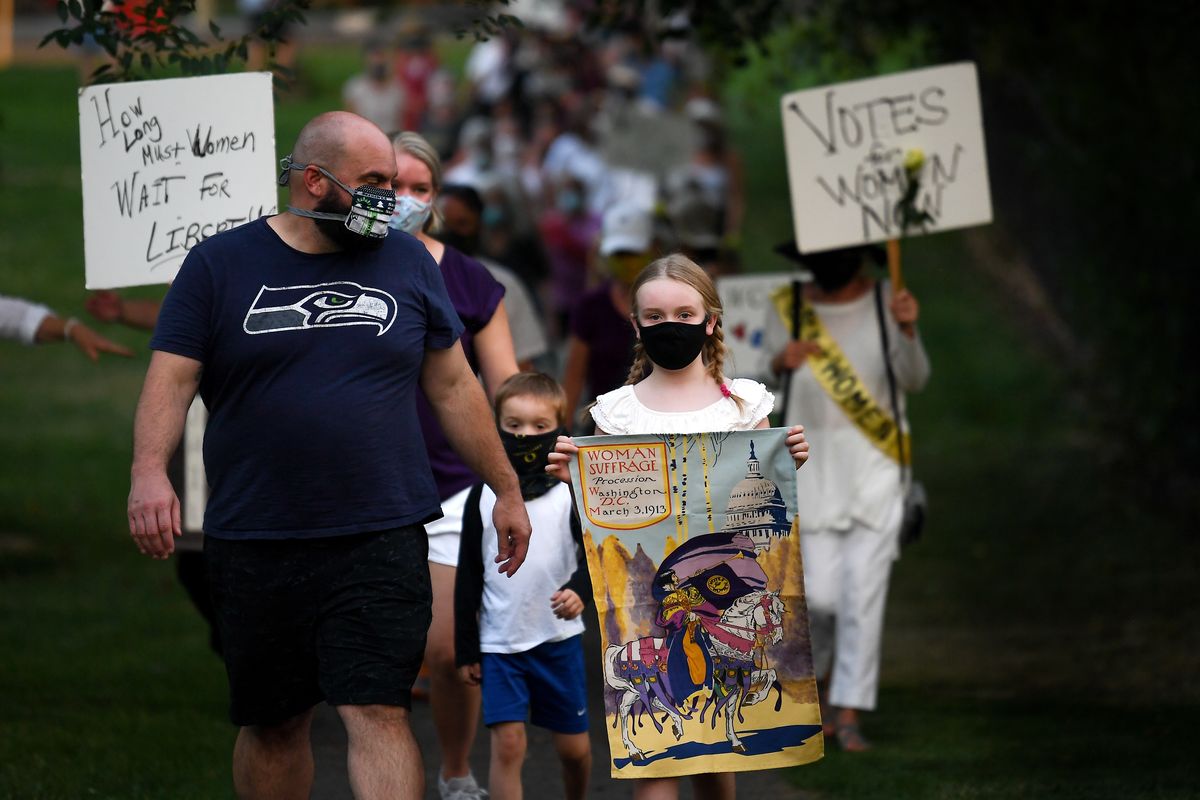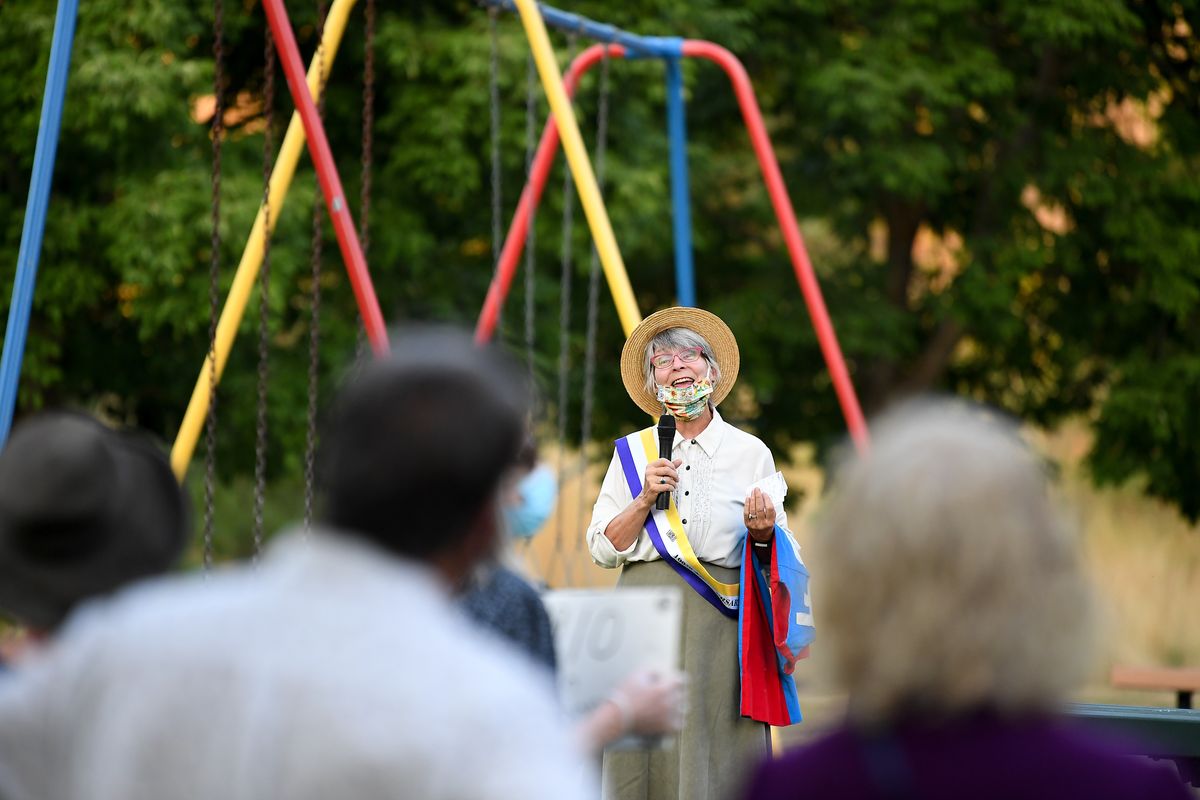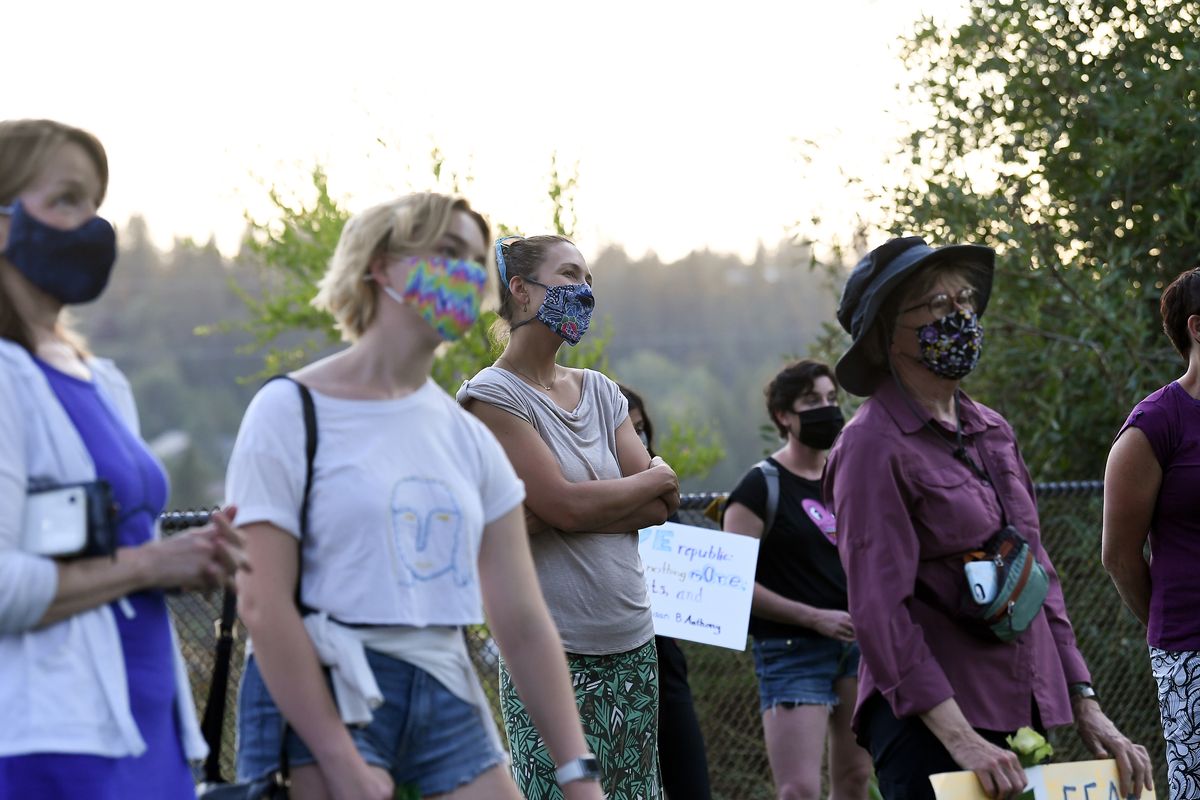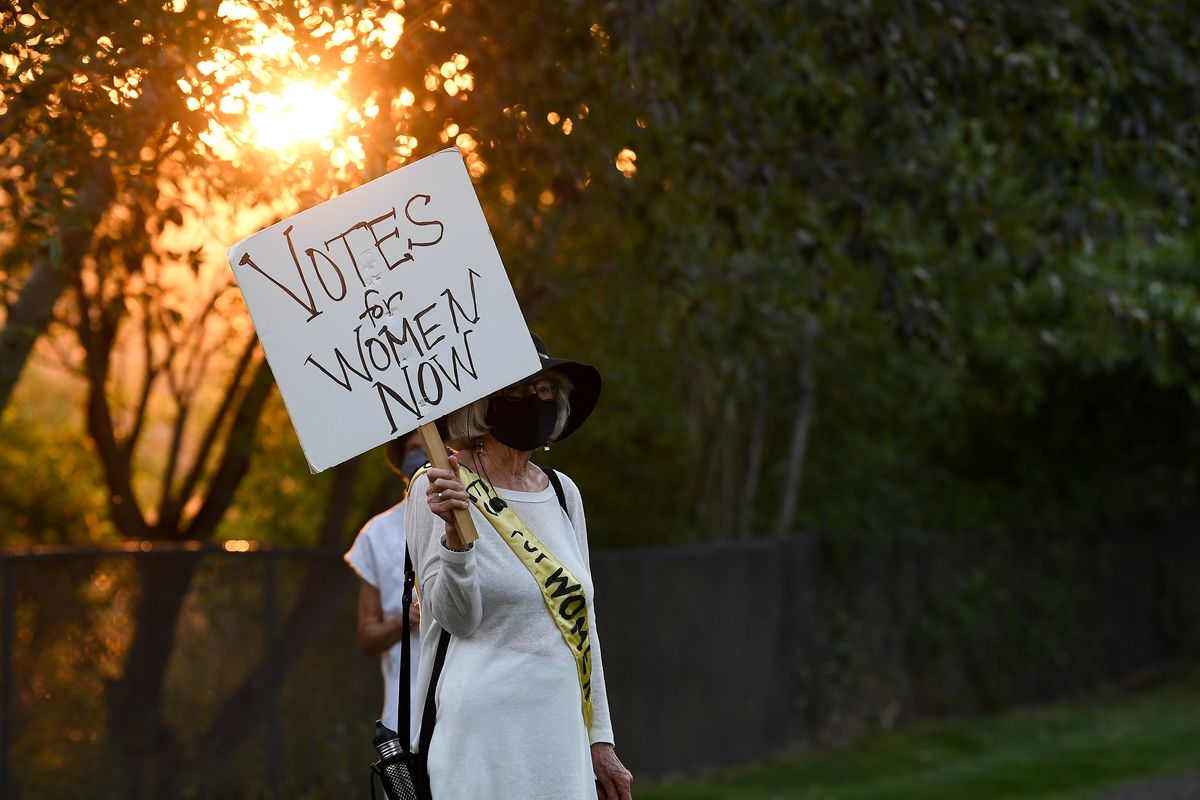‘They never gave up’: Crowds recognize 100 years of women gaining right to vote nationwide
Olivia Vehrs, 9, center, marches in front of a crowd next to her mother Hannah Vehrs, second left, and her soon-to-be-stepfather, Jeff Harris, left, during a Silent Suffrage March on Tuesday at Polly Judd Park. (Tyler Tjomsland/THE SPOKESMAN-REVIEW)Buy a print of this photo
Terry Lee, a sculptor in Coeur d’Alene, said he didn’t know what a suffragist was when he decided to sculpt one.
Thanks to donors, he’d started sculpting working men statues to stand along Front Street in Coeur d’Alene and represent the efforts of Idahoans. A local group called, “Women Getting Stuff Done,” recommended he feature a suffragist and helped raise $60,000 for him to do it.
Suffragists, who protested for women’s right to vote in the United States, fought their battle publicly for over 70 years. On Aug. 18, 1920, the 19th Amendment to the U.S. Constitution was ratified, guaranteeing women the right to vote.

Tuesday, which marked 100 years since that landmark decision, Lee unveiled his sculpture, which involved a yearlong process of molding clay, casting and learning about the suffrage movement.
“You think about that, 100 years really is not very long,” Lee said. “We have an entitled society right now that is asleep to the struggle that this represents.”
The right to vote is not a given, Lee said, and though he believes Americans would start a revolution before letting that right fall by the wayside, he said voters today need to “go the extra mile,” even if it means waiting in long lines or sending votes out early.
In Spokane, about 50 men and women gathered, socially distanced, with yellow roses that symbolize the suffrage movement at Polly Judd Park. Spokane members of the League of Women Voters, a nonpartisan nonprofit that supports voting rights, made up much of the crowd.
Goldie Jansen, a long-time Women's Studies professor at EWU prepares to march during a Silent Suffrage March on Tuesday, Aug. 18, 2020, at Polly Judd Park. in Spokane, Wash. The march was held to honor the 100th anniversary of women winning the vote by the ratification of the 19th amendment. (Tyler Tjomsland/THE SPOKESMAN-REVIEW)Buy a print of this photo
Claire Rudolf Murphy, a Spokane author, said Aug. 18 holds different meaning for women of color.
Many women of color could not vote until the 1960s due to voting taxes and literacy tests designed to stifle Black voters, said Inga Laurent, law professor at Gonzaga University. Black woman organized to teach people how to “claw their way” to the ballot.
While people recognize Susan B. Anthony or Elizabeth Cady Stanton, Black suffragists like Ida B. Wells were forced to walk in the back during suffrage marches, Murphy said. She listed the names of Black suffragists history books may have forgotten, she said.
Today, due to delays in the U.S. Postal Service, the right to vote feels threatened, said Ann Murphy, co-chair of the Spokane chapter of the League of Women Voters. She said Washingtonians are lucky to live in a state that has experience with mail-in voting, but advised the crowd to get the word out to friends and family in other states to send their ballots early.
In Coeur d’Alene, Sherry Bye and Susan Colvin stopped by the installation ceremony at noon Tuesday, and decided it was too crowded. The friends returned later in the afternoon to check out the sculpture and pose for photos.
Lee said he chose the woman’s position carefully. He studied photos of suffragists and had a model dress the part, trying different poses. He landed on a position in which she had one foot slightly forward, in a stance of “defiance” with a determined look on her face.
“She’s beautiful,” Colvin said, inspecting Lee’s work.
The two are members of the Town and Country Club, a service club in Worley that was among the groups that donated money to the project.
For Bye, it was a reminder of the importance and power of the vote.
“I remember taking my daughters and they would come with me and we all voted,” she said.
In 1896, Idaho became the third state to give women the vote, behind Wyoming and Colorado. In 1854, a vote to grant women the right to vote failed in Washington’s territorial legislature by one vote. Washington gave women the right to vote in 1910, before both states ratified the 19th amendment in early 1920.
“For 72 years, since the first women’s rights convention at Seneca Falls in 1848, they never gave up,” Murphy wrote in a guest opinion column Tuesday. “They did not get bitter. They took action. Like today, the battle for the vote was played out against a backdrop of other concerns – ending slavery, the Civil War, World War I, the 1918 flu epidemic. Through it all they continued to fight.”
Carolyn Lamberson contributed to this report.







